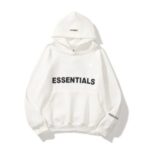In today’s hyper-competitive digital landscape, performance marketing is no longer optional—it’s essential. But with so many channels to choose from, the real question becomes: which platform delivers the most bang for your buck?
The heavyweight contenders are clear: Google and Meta (Facebook & Instagram) dominate the ad space. However, a growing field of niche platforms like TikTok, LinkedIn, Pinterest, and programmatic networks are also gaining traction.
Let’s break down how to choose the right performance marketing channel for your business.
Google Ads: Intent-Driven Powerhouse
Pros:
-
High Purchase Intent: Google Search captures users actively seeking products or services.
-
Extensive Reach: Includes Search, Display, YouTube, and Shopping.
-
Advanced Targeting: Leverages keywords, demographics, remarketing, and more.
-
Clear Attribution: With tools like Google Analytics and conversion tracking.
Best for:
-
E-commerce brands targeting bottom-funnel shoppers.
-
Service providers with a clear value proposition.
-
Businesses with defined search demand.
Challenges:
-
Rising CPCs in competitive industries.
-
Requires strong keyword strategy and ongoing optimization.
-
Limited creative freedom in Search ads.
Meta Ads: Social Discovery at Scale
Pros:
-
Highly Visual & Engaging: Great for storytelling and brand building.
-
Detailed Demographic & Behavioral Targeting.
-
Lookalike Audiences to scale efficiently.
-
Works well with retargeting and cross-funnel strategies.
Best for:
-
DTC and lifestyle brands.
-
Products with strong visual appeal.
-
Awareness and consideration stages of the funnel.
Challenges:
-
iOS privacy changes have impacted tracking accuracy.
-
Users are not in buying mode, requiring more nurturing.
-
Creative fatigue is real—requires constant testing and updating.
Other Channels: Niche But Mighty
TikTok:
-
Explosive reach among Gen Z and Millennials.
-
Strong for viral content and top-of-funnel discovery.
-
Creative-first; requires native-style videos and trends.
LinkedIn:
-
Best for B2B marketing and high-value lead generation.
-
Expensive but highly targeted by job title, industry, and company size.
Pinterest:
-
Strong performance for home, fashion, beauty, and lifestyle.
-
High-intent users planning future purchases.
-
Visual search is a powerful discovery tool.
Programmatic/Native Ads:
-
Great for scaling impressions across multiple sites.
-
Often used for retargeting and awareness campaigns.
-
Less control over placement quality.
How to Choose the Right Channel
-
Know Your Audience
Are they searching (Google), scrolling (Meta), or discovering (TikTok/Pinterest)? -
Define Your Goals
Is it conversions, traffic, leads, or awareness? -
Match Content Format to Platform
Text + intent = Google. Visual + emotional = Meta/TikTok/Pinterest. -
Budget & Resources
Can you produce creative for video-heavy platforms? Can you afford rising CPCs? -
Test and Learn
Start small, test multiple platforms, measure results, and scale what works.
Conclusion
There’s no universal playbook for performance marketing. The “right” channel depends on your business type, campaign goals, audience behavior, and creative capacity. For most businesses, a cross-channel strategy—leveraging Google’s high-intent search power, Meta’s discovery-driven social reach, and the precision of niche platforms like LinkedIn or TikTok—yields the strongest results.
But to build a winning strategy, you need more than just access to the platforms—you need the skills to use them effectively. Investing in Performance Marketing Training can empower you or your team to confidently plan, execute, and scale campaigns that deliver measurable results.
Frequently Asked Questions (FAQ)
1. What is performance marketing?
Performance marketing is a digital advertising strategy where brands only pay for measurable results such as clicks, leads, or conversions—rather than impressions or reach.
2. How do I decide between Google Ads and Meta Ads?
Choose Google Ads if your audience is actively searching for your product or service (high intent). Opt for Meta Ads when you want to build awareness, target by interests or demographics, and use visually engaging creative.
3. Can I use both Google and Meta for performance marketing?
Absolutely. In fact, a cross-channel strategy often performs best. Google captures demand, while Meta generates it. Combining both can cover all stages of the customer journey.
4. What are other effective performance marketing platforms besides Google and Meta?
Other popular platforms include:
-
LinkedIn (great for B2B)
-
TikTok (top-of-funnel engagement)
-
Pinterest (lifestyle and eCommerce)
-
Programmatic/Native Ads for wide reach and retargeting
5. Is performance marketing suitable for small businesses?
Yes. Performance marketing is budget-friendly because you pay only for results. With the right targeting and strategy, small businesses can see strong ROI even with modest ad spend.
6. Do I need training to run performance marketing campaigns?
While platforms are self-serve, Performance Marketing Training helps you avoid costly mistakes, understand targeting options, and optimize campaigns for better results.
- Choosing the Right Performance Marketing Channels: Google vs Meta vs Others
- Discover how to choose the best performance marketing channels—Google, Meta, or others—based on goals, audience, and strategy.
- marketing
Related posts:
 Machinery and Equipment Industry Email List: Unlocking Opportunities for B2B Marketing Success
Machinery and Equipment Industry Email List: Unlocking Opportunities for B2B Marketing Success
 Essentials Hoodie with Bold Logo – A Modern Streetwear Icon for Everyday Style”
Essentials Hoodie with Bold Logo – A Modern Streetwear Icon for Everyday Style”
 Why Investing in Charlotte SEO Is Crucial for Business Growth
Why Investing in Charlotte SEO Is Crucial for Business Growth
 The world of print on demand car wraps and discover how custom car wrap printing transforms vehicles into unique moving canvases.
The world of print on demand car wraps and discover how custom car wrap printing transforms vehicles into unique moving canvases.
 Enhance Your Digital Marketing Strategy with a Data-Driven Digital Marketing Agency
Enhance Your Digital Marketing Strategy with a Data-Driven Digital Marketing Agency
 ways to oversee living where you work ways to oversee living where you work
ways to oversee living where you work ways to oversee living where you work
 How to Choose the Best Website Designing Agency in India: A Complete Guide for Businesses
How to Choose the Best Website Designing Agency in India: A Complete Guide for Businesses
 Connect with Your Audience Effectively Through Twitter Marketing
Connect with Your Audience Effectively Through Twitter Marketing







